Wood deformation is caused by the uneven modification of the fibres. Moisture is what causes this phenomenon, more specifically moisture change. Wood is in a permanent relationship with the moisture in its environment, and changes in moisture levels lead to swelling and shrinkage of the fibres. Protection with varnish, paint, oil or wax reduces and evens out the interaction between wood and the environment. Deformations in protected objects such as table tops, interior doors, furniture parts, stair treads, sills are due to insufficient or unevenly applied protection. They are accentuated by the way the wood was cut, the species and the technical solution adopted.
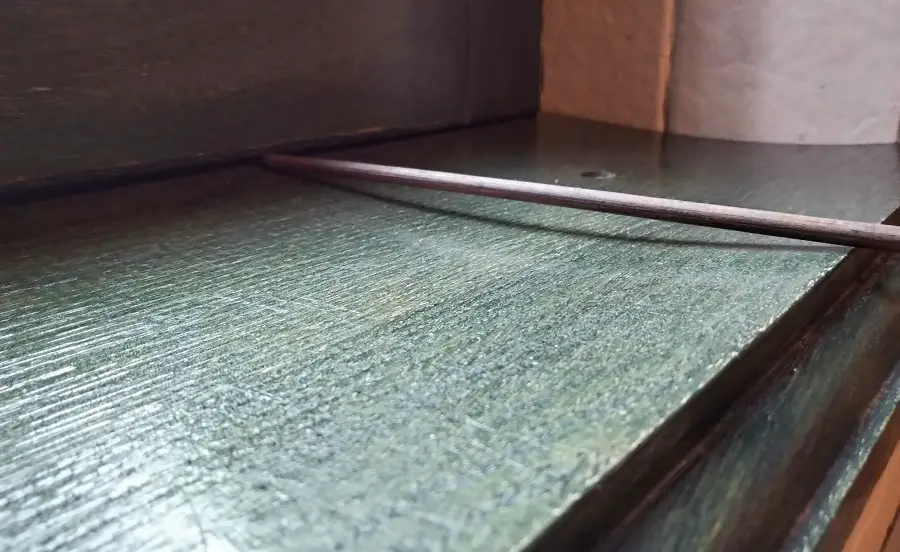
Water in wood and the transformations caused by its entry or exit
To understand the relationship between wood and moisture in the air, we first need to look at water in wood. It is of two kinds, free water and bound water. Free water is the one that circulates in the tree with the food. It starts to come out as soon as the tree is felled and continues fairly quickly until the wood reaches a moisture content of 30%, considered equilibrium or saturation moisture of the fibre. From here on down we talk about bound water, i.e. trapped in the cell walls of the wood. It can escape naturally until it reaches equilibrium with the moisture in the atmosphere, but much more slowly than free water or forced out to a prescribed moisture content. In the first case we are talking about natural drying of the wood, on the stack, with gaps between the pieces of wood to ensure air circulation. The second is kiln drying.
The difference between the output of the two types of water is that free water only causes weight loss, while bound water comes with changes in (physical) properties, mechanical, technological) and with internal stresses that can lead to warping, twisting and even cracking. The latter are influenced by how the wood was cut or growth defects.
The bound water content of wood is directly related to the environment in which it is found. Below is an approximate relationship between atmospheric and wood moisture, valid at an ambient temperature between 16 and 45°C:
- 20% humidity medium - 4% humidity wood
- 40% - 6%
- 45% - 8%
- 50% - 10%
- 65% - 12%
- 75% - 14%
- 80% - 16%
For the conditions in our country, the moisture content of the wood used indoors should be in the range 8-12% and that of the wood used outdoors 12-16%.
Changes in the humidity of the environment automatically cause changes in the humidity of the wood. It absorbs or releases moisture, and the result is swelling or shrinkage of fibres. If moisture is not absorbed evenly, the fibres deform unevenly, leading to warping of the wood. In order to limit the bond with the environment and to absorb or release moisture evenly, wood is protected with varnishes, paints, oils or other finishing materials.
Deformation caused by insufficient protection. Solutions to reduce changes
The better the wood is varnished or painted on all sides, the less contact it has with the environment. For example, a piece of wood that is completely covered in epoxy resin has no contact with the outside and thus remains permanently stable. But no one wants wooden furniture "drowned" in varnish or paint. To protect it and reduce its contact with the environment, thus making moisture exchange more controlled, furniture is coated with thin layers of finish that do not destroy the charm of the wood.
The furniture is usually finished assembled. Even when items are finished separately, the emphasis is on the visible parts, with the hidden parts or ends being covered very little. These are the areas where moisture penetrates and makes the wooden furniture 'pop' when, for example, you open the window in winter, changing the humidity level inside.
The addition or loss of moisture will cause the fibres to deform. The construction solution chosen must not allow stresses and defects or deformations to occur. For example, door frames should not be glued to the frame as this creates tension and may crack. They are left loose in the frame, and the inside edges are painted so that there is no visible difference in the event of contraction. Reinforcements are added to the backs of long table tops to prevent warping.
It is very important that the finish covers the end grain areas (where the wood is cross-sectioned perpendicular to the grain) because this is where moisture exchange is greatest. Even if this exchange is not stopped, the finish makes it uniform and less, thus reducing warping. Also, wood sanding before applying the finish must be correctly done, with 150, max 180 grain, to adjust the absorption in the fibre.
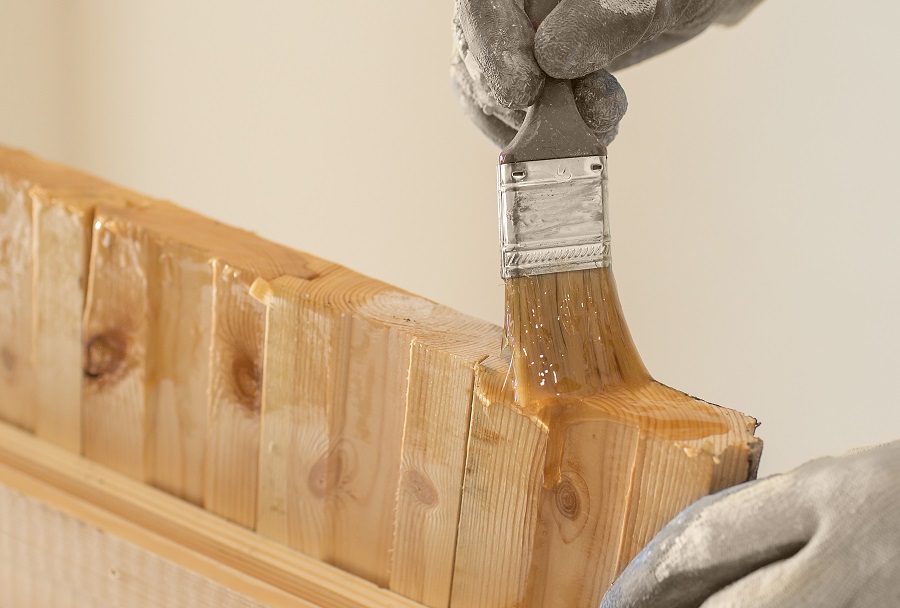
Uneven application of finish leads to visible deformation
An important cause of warping, often found on table tops or steps, is uneven face finishes. Usually, 3-4 coats of finish are applied to the visible side, and the back is left with a single satin coat without finish. Moisture thus has different access to the wood, the fibres on the back can absorb or release more moisture than those on the face. As a result, the panel will warp. This often happens to long table tops not fixed to their frames or to steps glued to concrete stairs with residual moisture.
The tensions that are created are greater the harder the wood. Bending an oak step, for example, can generate forces so great that they can cause it to peel off, even if a suitable adhesive is used. And improperly made table tops can end up looking like ticks.
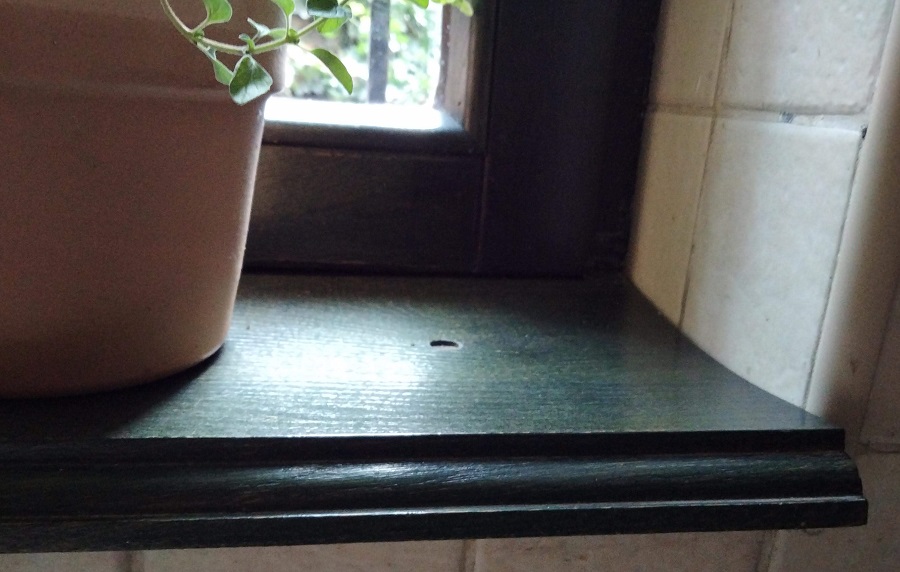
In these cases it is recommended to apply an equal number of coats on both sides, and if it is a more complicated finish, at least 2 coats of material should be applied on the back, and the technical solution should be chosen in such a way as to prevent warping (table top on frame).
Another solution, perhaps the safest, is to replace the warp-prone timber elements with laminated solid wood. Laminated wood is much more stable, both due to the perpendicular laying of the layers on top of each other and to their bonding. But such a countertop can be much heavier, and a simplistic technical solution can lead to warping under its own weight.
I hope you find the above information useful. As usual, additions are welcome. And if you have any questions or queries, please leave them in the space below. I'm sure I'll reply.


















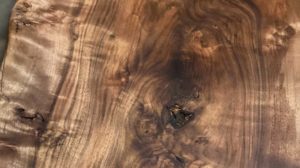




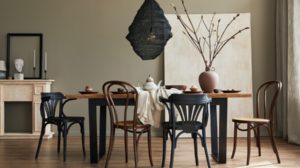



Add comment